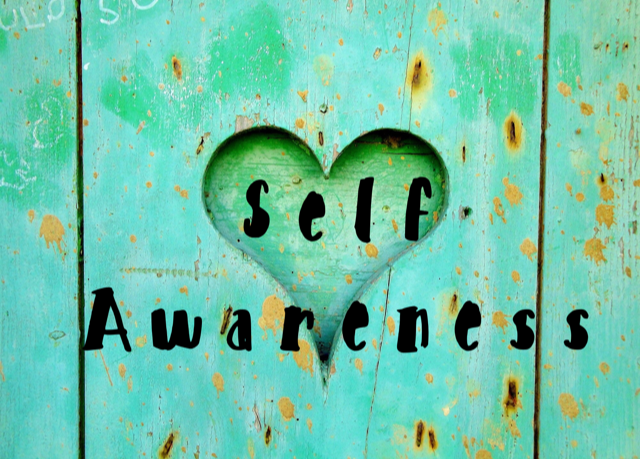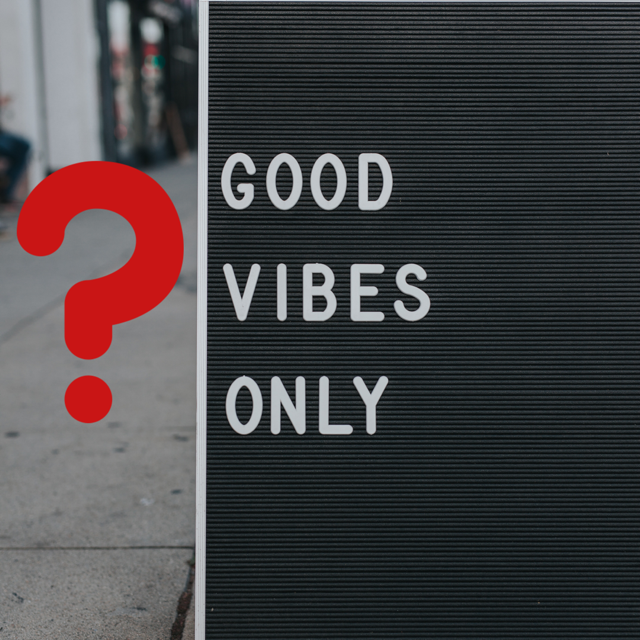It is not an easy task to become willing to look at ourselves in such a deep way. Truly investigating all the cracks and crevices of who we are and what we have become.
When we are able to take an honest inventory of ourselves, learn to accept and love each part, and combine that with recognizing and honoring our feelings, it becomes easier to translate that into behavior.
What is the Shadow Self?
According to Carl Jung, the shadow is the “dark side” of our personality. The site of repressed desires, emotions and impulses hidden from our conscious awareness. It mainly consists of primitive, negative human emotions and impulses like rage, envy, greed, selfishness, desire, and the striving for power.
All we deny in ourselves (the things we perceive as inferior, evil, or unacceptable) becomes part of the shadow.
Anything that we deem incompatible with our chosen attitude about ourselves is sent to this dark side.
These disowned parts of our personality don’t go anywhere. Although we deny them in our attempt to cast them out, we never get rid of them.
We repress them; they are part of our unconscious. Think of the unconscious as everything we are not conscious of. It’s a form of compartmentalizing.
We accept the “good” parts of ourselves and dismiss the “bad” unconsciously stuffing it away inside.
We can’t eliminate the shadow. It stays with us as our dark brother or sister.
But trouble arises when we fail to see it. It is standing right beside us, looming.
According to some experts, our subconscious and unconscious (or shadow self) drive a good portion of our behavior. They contain some of the deep-seated belief systems and thoughts that we harbor beneath our conscious awareness, usually rooted in and stemming from childhood.
It’s no surprise that these hidden aspects of our personality have been hugely implicated in self-sabotaging behaviors. This is where our limiting beliefs live.
How the Shadow is Born
Every young child knows kindness, love, and generosity, but they also expresses anger, selfishness, and greed.
These emotions are part of our shared humanity. But as we grow up, something happens.
Traits associated with “being good” are accepted, while others associated with “being bad” are rejected.
We all have basic human needs. These needs include physiological needs, safety and security needs, and needs for belonging.
These needs are biological and instinctual.
As children, when we expressed certain parts of ourselves, we received negative cues from our environment and family system.
Maybe we got angry and threw a tantrum. Our parents reprimanded the outburst and sent us to our room.
Or perhaps we acted boldly or spontaneously in our first-grade classroom. Our teacher shamed us for our lack of self control in front of the class and told us to sit down.
Whenever it happened—and it might have happened often—it threatened one of our basic needs.
Would the disapproval of our parents threaten our safety? Would the disapproval of our teachers and classmates jeopardize our need to belong?
We adjusted our behavior to gratify our needs and learned to adapt to the external world.
All the unaccepted or discouraged parts of us in the first 20 years of our lives are bundled together, swept out of view (outside our conscious awareness).
As Robert Bly says in A Little Book of the Human Shadow, the child puts all of these unwanted parts into an invisible bag and drags it behind him.
This repression of unwanted parts creates what psychologist Carl Jung called the personal shadow.
What Happens When You Repress Your Shadow ?
So what happens to all the parts of ourselves we sweep out of view?
Whatever qualities we deny in ourselves, we see in others.
In psychology, this is called projection. We project onto others anything we bury within us.
If you get irritated when someone is rude to you, it’s a good bet you haven’t owned your own rudeness.
This doesn’t mean the person isn’t being rude to you. However, if rudeness wasn’t in your shadow self, someone else’s rudeness wouldn’t bother you so much.
This process doesn’t happen consciously. We aren’t aware of our projections.
Our egos use this mechanism to defend itself—to defend how it perceives itself. Our false identities of being “good” keep us from connecting to our shadow.
These psychological projections distort reality, creating a thick boundary between how we view ourselves and how we behave in reality.
The Benefits of Acknowledging Your Shadow
The shadow isn’t a popular topic. Who enjoys owning their flaws, weaknesses, selfishness, nastiness, hate, and so on?
Focusing on our strengths is more enjoyable and life-affirming.
Exploring our shadow side, however, gives us tremendous opportunities for growth and development.
Here are some benefits that result from shadow work:
Improved Relationships
As you acknowledge your shadow side and come to terms with your darker half, you see yourself more clearly. You become more grounded, human, and whole.
When you can accept your own darker parts, it is easier to accept the shadow in others.
As a result, other people’s behavior won’t trigger you as easily. You’ll also have an easier time communicating with others.
You may notice an improvement in your relationships with your spouse, family members, friends, and business associates.
A Clearer Perception
In seeing others and yourself as you are, you’ll have a cleaner lens with which to view the world.
As you acknowledge your shadow self, you’re approaching your authentic self, which gives you a more realistic assessment of who you are.
You won’t perceive yourself as being too big (inflated) or too small (deflated).
When you’re self-aware, you can assess your environment with more accuracy.
You’ll see others and evaluate situations with greater empathy, compassion, and understanding.
More Energy and Improved Physical Health
Dragging around this invisible bag of stuff behind us is draining. It is exhausting work to continually repress and suppress all of the parts of ourselves that we don’t want to face in our adulthood.
Fatigue and lethargy can flood the unexamined life. Mental suppression can also lead to physical pain and disease.
With shadow work, you liberate a tremendous reservoir of energy you were unconsciously investing in protecting yourself. You will literally feel lighter!
This can improve your physical, mental, and emotional health.
Shadow work can bring you inner strength and a greater sense of balance, making you better equipped to take on life’s challenges.
Increased Creativity
One of the greatest benefits of shadow work is that it unlocks more of your creative potential.
Creativity is a spontaneous occurrence in emotionally healthy individuals.
Tips For When You Engage in Shadow Work
Center/Ground Yourself
This is perhaps the most important thing to do before you engage in shadow work. There are many techniques for grounding or centering yourself. Be calm and sit in silence taking deep and focused breaths. Do not attempt to do shadow work from a place of anger and frustration. You’ll be judgemental, critical, or confused. This will inhibit your shadow work.
If you attempt to get to know your shadow self when you’re not centered you won’t get constructive results. It should come from a place of calm curiosity with the intention of improvement.
Self-Awareness & Self-Compassion
Self Awareness is the ability to take an open-minded and honest look at yourself without judgement.
Before you get to know your shadow, it is helpful to cultivate a sense of unconditional friendliness with one’s self. In Buddhism, it’s called Metta (loving kindness). It is the practice of cultivating love and compassion for yourself and also for others. This can be practiced by anyone regardless of religious affiliation. It’s ultimately just wishing wellness for all..
Without friendliness and self-compassion, it is difficult to look at our darker stuff.
If you’re hard on yourself when you make mistakes, it is difficult to confront your shadow.
If you’re accustomed to feeling shame or guilt, you need to meet these emotions with friendliness, self-acceptance, and self-compassion.
Remember that we all have a shadow. We are all in this together!
You will feel a sense of peace and confidence when your self awareness is in alignment with your inner guidance system. Calm, peaceful and grounded. You will be able to react consciously and not passively.
Seeing the shadow requires a self-reflective mindset—the ability to reflect and observe our behaviors, thoughts, and feelings without judgement.
Practice Courageous Honesty
Self-honesty and integrity are prerequisites for shadow work.
True self-honesty means being willing to see unpleasant attributes in our behavior and personality. Not an easy task!
It is often uncomfortable to come to terms with your disowned parts, which is why the ego invests so much energy in repressing them.
Seeing and accepting your insecurities, selfishness and nasty parts can be challenging.
The rewards are worth the discomfort, as these honest confrontations with your shadow unlocks more of your creative potential, opening a new world of possibilities for your psychological development.
Journal Your Findings
I find it fascinating how some of our disowned parts want to remain out of our view.
Similar to how a dream slips out of mind moments after waking up, our disowned parts can elude us.
A writing journal where you record your new discoveries about yourself is a remedy.
Writing your insights and reviewing them later helps translate the discovery into your conscious awareness.
It’s really cool to look back through your journals and see your personal growth journey unfold.
Be Conscious of Your Emotional Reactions
Remember that the shadow is elusive; it hides behind us. Our defense mechanisms are designed to keep our shadows repressed and out of view.
The more you pay attention to your behavior and emotions, the better chance you have of catching your shadow in the act.
We tend to project our disowned parts onto other people.
One of the best ways to identify your shadow is to pay attention to your emotional reactions toward other people.
Sure, your colleagues might be aggressive, arrogant, inconsiderate, or impatient, but if you don’t have those same qualities within you, you won’t have a strong reaction to their behavior.
If you’re paying close attention, you can train yourself to notice your shadow when you witness strong negative emotional responses to others.
At the end of the day, it’s helpful to take five or ten minutes to reflect on your interactions with others and your related reactions. This time of self-reflection will enhance your self-awareness.
Focus on what and who evokes an emotional charge in you. It doesn’t matter what the emotion is; it’s a clue you are denying something within you.
Challenge the Good Parts
Many of us identify ourselves as being a “good person”. We were praised as children for being a “good boy” or “good girl,” and that identification stuck with us.
This intensified the split between our conscious identity and our shadow.
Make a list of all of your positive qualities. Then, highlight the opposite. Try to identify the opposite within yourself.
For example, if you define yourself as a disciplined person, you’re repressing your lazy part. The lazy part is hiding in the shadow.
I hope that this information was helpful to you and also that you become willing to look at and accept all the parts of yourself.







